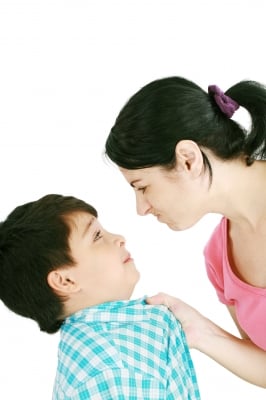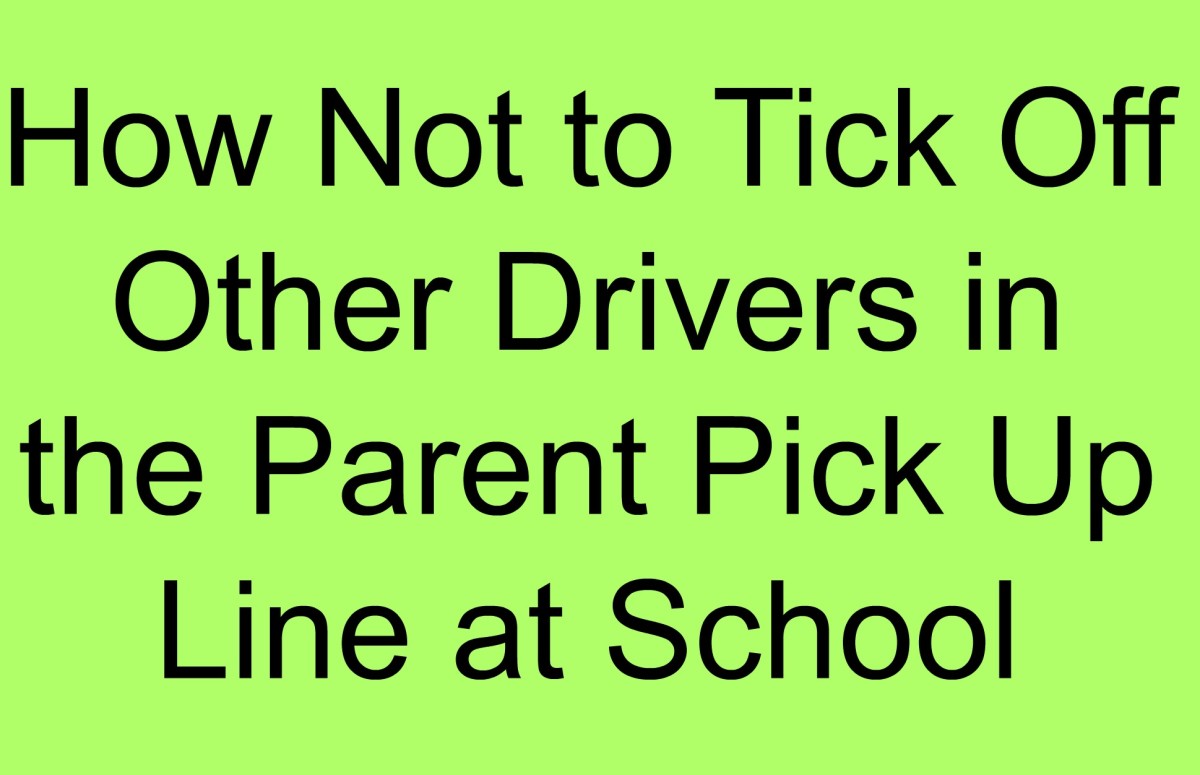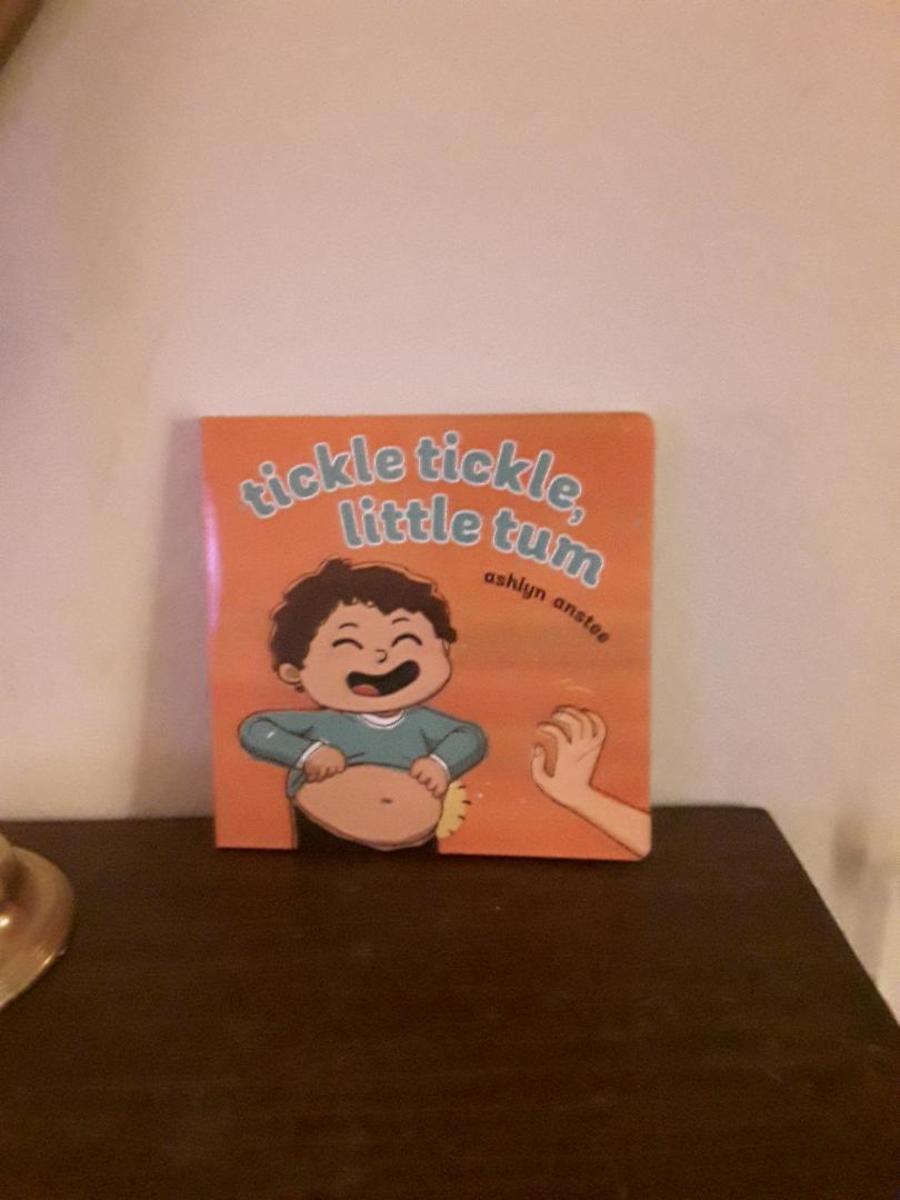- HubPages»
- Family and Parenting»
- Parenting Skills, Styles & Advice»
- Parenting Advice & Tips
How to Nurture and Teach Self Acceptance to Your Child

How to nurture and teach your child self-acceptance is actually very simple. Accept yourself.
I said it was simple, but I didn’t say it was easy! However it is possible, and this article introduces you to simple techniques that can help you and your child develop self-acceptance.
This article covers three main points:
- Why our own self-acceptance is crucial to nurturing self-acceptance in your child
- How to foster your own self-acceptance
- How to relate to children in ways that teach them self-acceptance


Why our own self-acceptance is crucial
On an airplane adults are instructed to put on their own oxygen mask first before helping children. That’s because to be able to help others they need to fully alert and aware of what’s going on around them.
The same is true when teaching children self-acceptance. We might think that all we have to do is tell our children we love them and they will feel good enough. We might think that our own low self-esteem doesn’t matter. But it does.
The Science Bit
Children, particularly until the age of six, don’t think the same way adults do. Their brainwaves are literally different.
Babies mostly experience delta waves, which for adults occur during slow wave sleep and in some continuous attention tasks.
From toddler age till around six, theta brainwaves are predominant. Adults and older kids do experience theta brainwaves, but less often. Times we do are when close to sleep or when highly emotionally aroused. Theta brainwaves enable children to learn new information rapidly. (Think of how quickly a child learns to speak compared to an adult learning a new language.)
Small children learn by absorbing what’s going on around them. This is why modeling (demonstrating the action or behavior we want children to adopt) is so important.


It’s not what you do it’s how you do it.
Most people do realize that children respond more to what we do than what we say. But even more they respond to how we are. They instinctively know when we aren’t being honest even if they don’t know in what way or why.
It’s easiest to explain this with an example that most parents will be able to relate to. Once, several years ago, I met my girls after school and headed for a playground. We stopped to buy some drinks and snacks. One of my daughters reacted huffily when I said no to a sugary snack.
I tried to empathize with her. “You feel angry that I didn’t let you have that chocolate, and that’s okay. But … blah, blah, blah.”
I might as well have said blah, blah, blah, because all she heard was “but.” She didn’t want my empathy, she wanted to the chocolate – and I was withholding it. She continued to huff, and I started to feel annoyed. However, I had read enough parenting books that instructed parents should never show anger towards their children to think that I shouldn’t say what was on my mind.
To be honest I can’t remember all of our conversation, but I do remember that at some point she said that I had told her she was naughty and shouldn’t be angry.
Shocked, I replied. “I didn’t say that!”
But I had been thinking it. My thoughts had run along these lines: “She’s behaving like a brat. I shouldn’t let her get away with this.”
These were closely followed by: “I shouldn’t be so judgmental. And I mustn’t let her see that I’m having these horrible thoughts about her.
According to those parenting books, calling my child a brat would leave her feeling her very being was wrong. Good parents judged the behavior, not the child. Yet here I was wondering if I had somehow created a monster. I couldn’t let her know any of that.
Except she already knew it. So I admitted, yes, I had been thinking she was naughty. I also added I knew it wasn’t true.
She instantly calmed down.
Children aren’t fooled by parental fakeness. They know something isn’t right, even if they can’t always put it into words like my daughter did. The moment I was honest she calmed right down. I had been trying to use niceness to manipulate her into being how I wanted. My children, it seems, would rather have honest anger than fake niceness.
This is not an invitation to call your children names or yell at them. It’s an invitation to notice the thoughts that arise when you feel the urge to rant. By the time of that occasion with my daughter I had been observing and questioning my thoughts for a few years, and she also knew the process I used to do this. So when I explained to her that I knew my thoughts weren’t true she understood what I meant.
Many of us don’t just think our thoughts are true, we think we are our thoughts. That’s why we say, “I shouldn’t think such terrible things.” Or, “I’m a terrible person for thinking that.” Admitting my thoughts to my daughter reminded me that they were simply passing through my mind. They didn’t mean anything about either of us. This was partly what allowed us both to calm down. The other importance factor was that I had validated her experience. When adults deny their feelings, it is hard for children to trust their own experience.


How to foster your own self-acceptance
In the anecdote above, I’ve written the words should and shouldn’t in italics because I want to look at them more closely. When we think we should do or be a certain way it blocks us from honestly noticing what’s going on. For me, it’s important to feed my family healthy food. But in that moment I also wanted harmony with my child, so I experienced internal conflict. To avoid this I wanted my child to happily accept that I’d said no.
Instead she gave me a more valuable gift by showing me that fake niceness doesn’t work. This allowed me to notice where I was trying to follow rules instead of looking inside for what was causing my turmoil. It wasn’t because of her. It was because I was judging myself and judging her.
Awareness
Awareness is the key to self-acceptance. By that I mean awareness of thoughts and feelings and being able to separate from them. The judgmental thoughts that come into our minds are not who we are. Had I been able see this on that occasion, I would have been able to accept myself more quickly, and so my daughter’s reaction would not have mattered. I could have allowed her to feel her anger until she was ready to let go.
Our reactions are caused by believing thoughts and by trying to avoid certain emotions. The emotions we most often try to avoid are those usually described as negative. There’s a sad irony in trying to avoid negative emotions: by getting into a fight with our feelings what we get is a fight! By truly accepting them we transform them. Just as darkness disappears when we switch on a light, so negative feelings disappear when we welcome them.
Useful Practices for Developing Awareness
There are many different techniques that can support you in fostering awareness. For some people meditation works, for others it is less effective. If you approach meditation as something you should do, or as something that will make you “good” you are approaching it from the same perspective that keeps us from self-acceptance. So as best you can, see meditation (or any technique) as an aid to becoming more aware rather than as a way to improve yourself. We are not bad because we feel frustrated; we just got into some unhealthy habits.
Any technique that guides you towards acceptance of negative thoughts and feelings will, in the long-term, bring peace of mind. Any process that encourages you to push negativity away may bring short-term relief, but is less likely to result in lasting change. We resist negative feelings because we think they will overwhelm us, but what causes overwhelm is the struggle. If this seems hard to believe, that’s okay. Don’t believe it, but stop just now and notice what you are feeling.
Could you allow that feeling just for this moment?
And then would it be okay if it went?
These questions are adapted from the Sedona Method, which is one technique I find very helpful in letting go of negative feelings, and for nurturing awareness.
Links to Resources
Many of these techniques provide free resources that you can use at home.
Information on Cognitive Behavioral Therapy
Listed below are some other processes that you may find helpful. Several of these techniques have specific parenting programs.
The Work of Byron Katie (see my article Improving Your Quality of Life With The Work of Byron Katie)
Cognitive Behavior Therapy (CBT)
Non-Violent Communication (NVC)
Neuro-linguistic Programming (NLP)
Emotional Freedom Technique (EFT)
The Lefkoe Belief Process
Prayer
You don’t need to be religious to pray. If you are religious you think of prayer as asking God for assistance, but if you are not, you can think of it as asking your higher mind. When I feel stuck in an argument with my children (or anyone) I sometimes ask: “Please allow me to see from a different perspective.” It is amazingly effective.
The most important thing is for you to choose a technique that works for you.

How to relate to children in ways that teach them self-acceptance
Although the more we naturally accept ourselves, the more we will naturally guide our children into self-acceptance, it’s not necessary to wait until then to begin. In fact, treating our children and ourselves with kindness fosters self-acceptance, so it’s a win-win situation.
I feel wary of providing guidelines because it’s easy when stressed to make suggestions into rules to be followed. Therefore what follows are some practices to use as best you can and whenever you remember! Do be kind to yourself when you forget, allow your regret and acknowledge your desire to nurture self-acceptance in your children.

Allow your child to feel and express emotions.
From baby to adulthood, this is the single most important thing you can do to teach your children self-acceptance. If we tell children a feeling is wrong and they shouldn’t have it, they usually conclude that there must be something wrong with them, or with the feeling. If they then try to stifle the feeling that creates an internal fight – which often becomes external!
Feeling and expressing an emotion are not the same reacting to it. What we actually don’t like is the reaction rather than the emotion. Children don’t enjoy reacting either, and as they learn to not react to every feeling they have they will become more confident. Allowing them to have feelings is the first step to teaching them not to react.
There are two ways to do this:
1)Model acceptance of your own feelings.
Anger is the emotion we most often try to stop in children and in ourselves, so I will focus on it for now. If I feel anger and think I shouldn’t, I am more likely to blame the anger on someone else, in attempt to justify feeling the way I do. If on the other hand I simply notice the anger I can let it come and let it go. One very effective way to do this is to focus on the sensations in your body.
You could even say to your child, “I notice feel angry when I think about what you said (or did). It’s probably because it reminded me of something from long ago. It has nothing to do with you so I’m going to take a few moments to calm myself.”
2) If your child has reacted to anger by hitting or some other way you find unacceptable, you can explain to them that it’s okay to feel angry, but that hitting hurts the other person so it’s not okay. As best you can, try not to label the action bad, because children can’t always separate actions from themselves.
Give Age Appropriate Choices
Even babies have preferences. One of my daughters “chose” her bedroom décor when she was 6 months old. I held up a lampshade with red and blue mice on it, and she smiled. I held up one with elephants in pastel colors, and she giggled, clapped and waved her legs. I knew which one she liked best. Of course you don’t need to do this with every situation, but do give simple choices whenever possible.



Spend time with your children in age-appropriate ways.
Ignore anyone who says you are holding your baby too much. Parents of premature babies used to be kept from their little ones for fear of infection. But doctors have found that babies who are regularly held thrive better and cry less. Another advantage is that touch helps mothers and premature babies bond. The advantages of touch apply to all babies, and those who are held regularly tend to have fewer tantrums as toddlers.
Recent research in England indicates that teenagers whose parents spend time with them are less likely to smoke, drink or engage in underage sex or violent behavior. In other words, they feel more secure.
Some suggestions of activities to do with older children are:
Read books they like, either separately or together. I read The Hunger Games trilogy after my elder daughter did, and I am reading a Percy Jackson book along with my younger daughter.
Go to the cinema together
Play on a wi fit. (They’ll laugh at you, but who cares?)
Go to a beach: walk through the surf with them, build sandcastles, cover them in sand. We adults can get so caught up in the seriousness of life that we forget to have fun, and we can learn from our children.
Let them teach you! Literally we can learn from our kids, especially in technology. Teaching us also boosts our children’s self-esteem – so long as they are happy to do so of course!
Get to know your children’s friends.
This is easy when your children are small, but is just as important when they are older. By inviting friends round you show appreciate them.
Tell them stories from your own childhood.
We loved to hear about the mischief my father got up to.
My children find it helpful if they are going through a difficult time and I tell them of similar situations from my own childhood.
Both these ways help children feel understood.
Explore thoughts and beliefs with your children.
My two used to bicker over who got the biggest piece of pie, pudding, chocolate… One day I asked them why it mattered. After a little probing one said a smaller piece meant she was less important and the other said it meant she wasn’t liked as much. This opened up a chance to discuss more deeply, and gave me insight into what mattered to my children.
If a child reacts huffily to something you say this is another good opportunity to explore what’s going on. Ask them what they heard you say that felt like a criticism, and let them know your intention wasn’t to criticize and that you would like the chance to explain what you said more clearly. Don’t blame them for reacting that way, and don’t blame yourself either: the aim is to maintain a connection and clear up misunderstanding.
And feeling connected and understood nurtures self-acceptance in us all.



